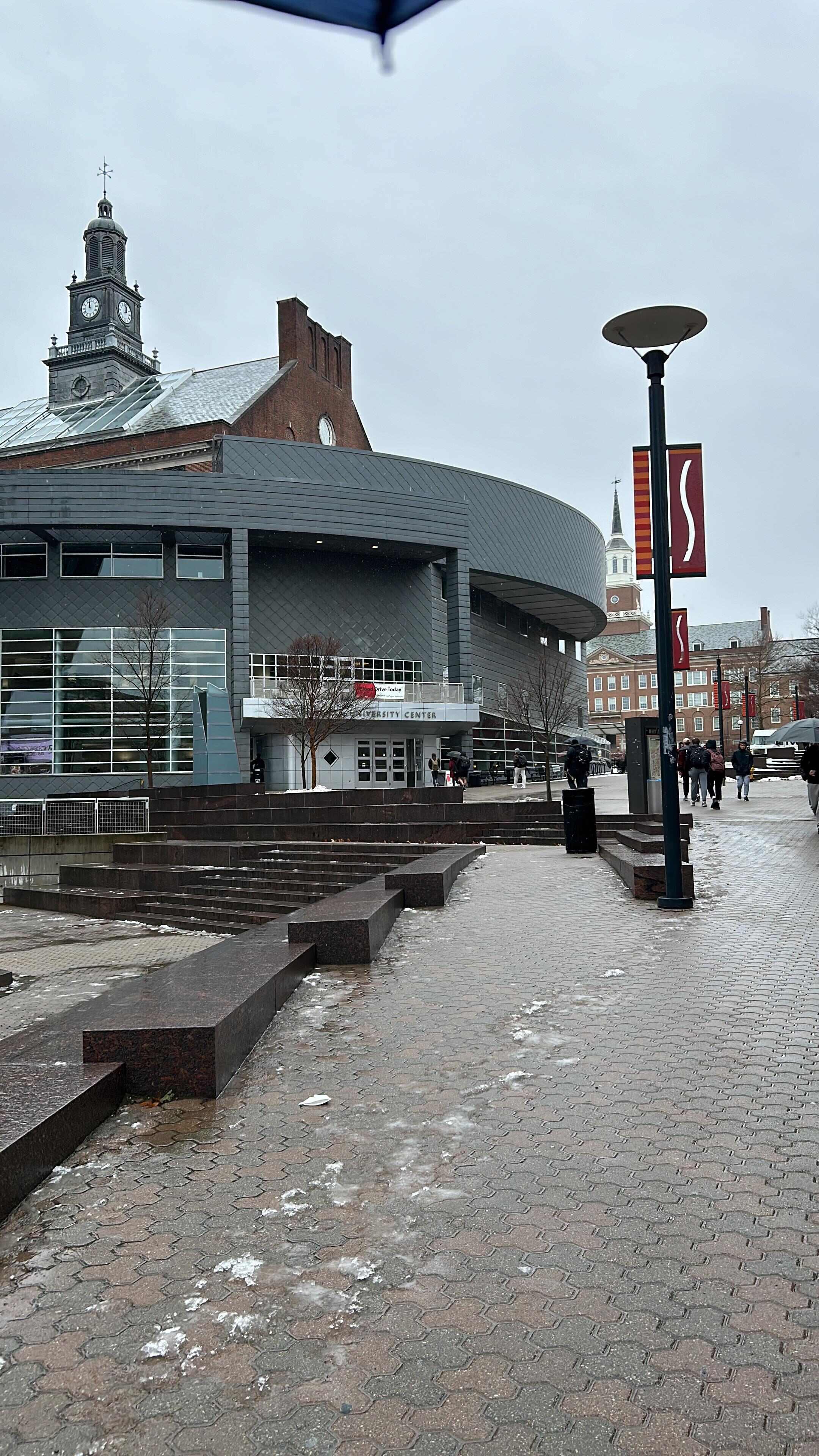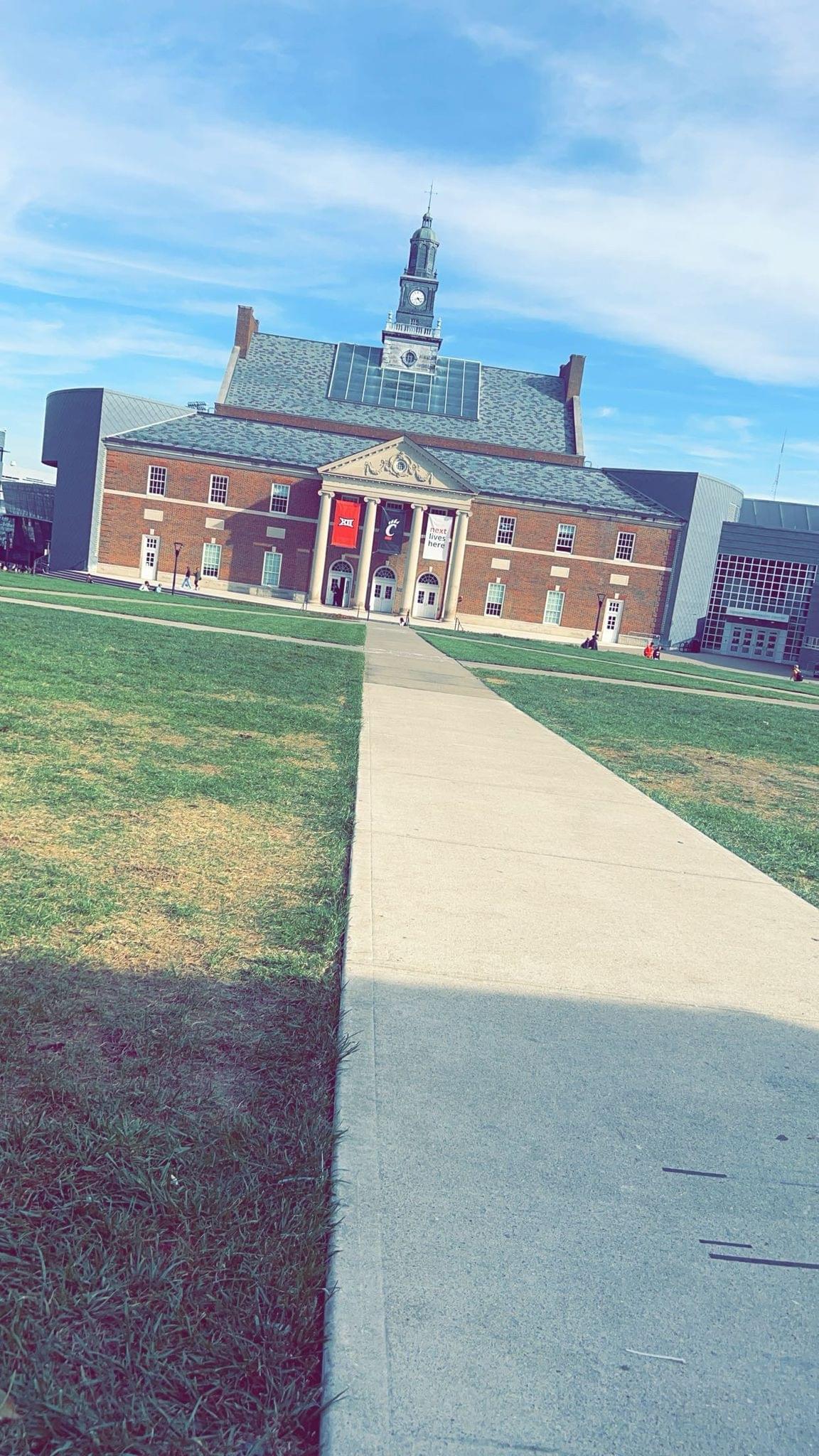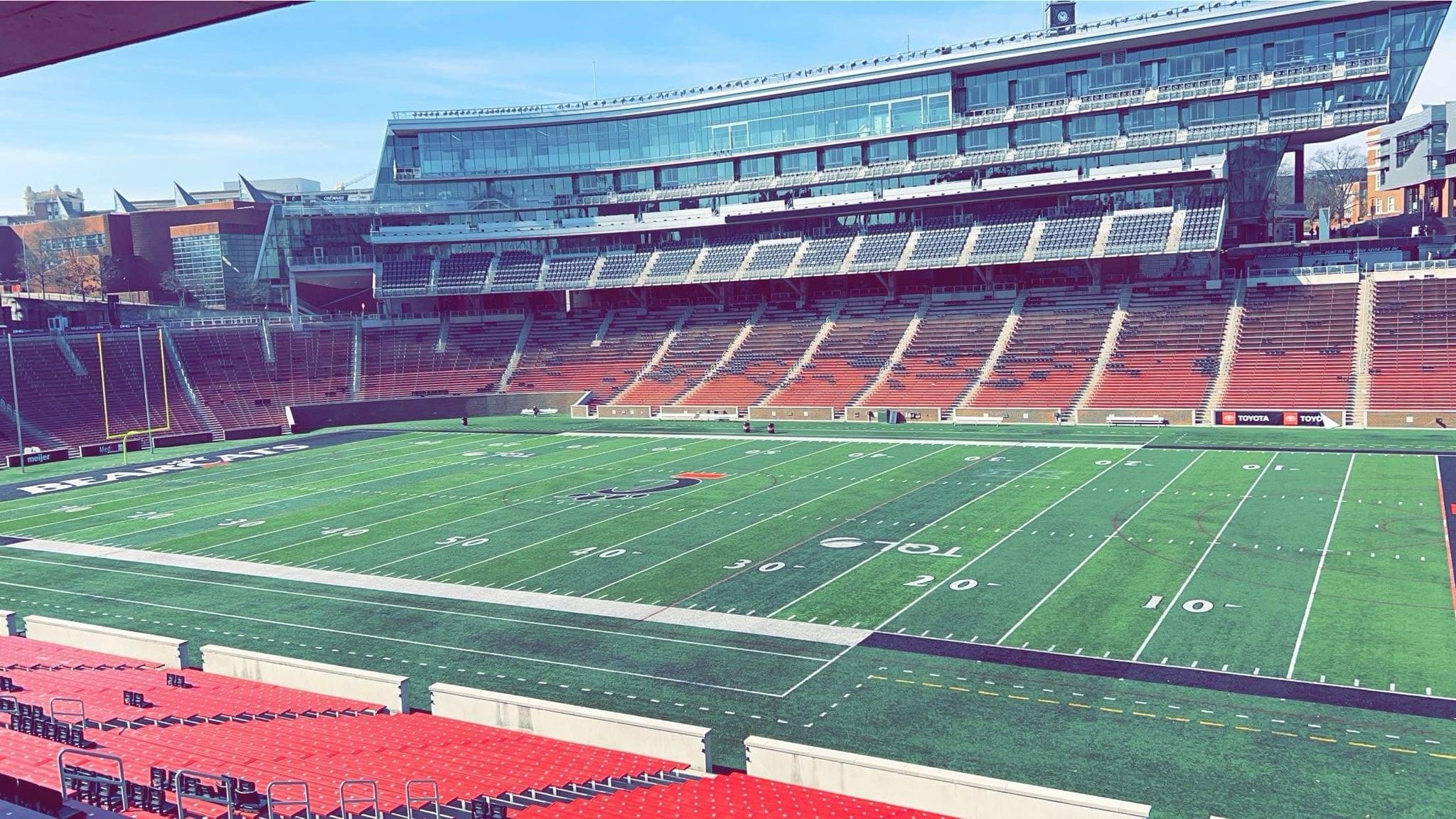What Students Say
Likes
- Curriculum of the program
- Opportunity to meet people from various countries
- Campus Infrastructure
Dislikes
- Accommodation
- Financial Aid
- Large in count of students for few subjects
Course Curriculum
- My course’s curriculum was challenging at times but was very engaging. It offered a balance of theory and practical learning, with the main emphasis being on real-world experience. The faculty were experienced, friendly, and always willing to help. There was also a lot of flexibility in choosing electives, allowing students to focus on subjects that matched their career goals. The course curriculum was well-designed and offered real-world experiences in classrooms.
- Some semesters were overwhelming because of multiple deadlines for projects, assignments, and exams. Not all electives or advanced courses were available every semester, so planning ahead was important. Another challenge was working on group projects with international students; the time zone differences made it a little difficult.
- Typically, there were one or two classes, for 1.5–3 hour classes each day. The majority of classes took place from 9:00 AM to 5:00 PM. Class numbers vary by subject, with core classes having 25–40 students and electives having 15-20 students. The majority of the students in my program were Indian, comprising between 40 and 50 percent of the class.
Admission Experience
- I have applied to 5 universities. Got acceptance in all universities. All universities I received confirmed admission.
- Apart from other universities, this university offers a unique style of teaching methodology and also lot of opportunities in co-op as well as full-time opportunities.
- Submitted the application to the university with proper documentation like LORs SOPs Educational documents, etc and maintained transparency.
- IELTS, Duolingo, TOFEL PET, GRE
- IELTS-6.5 ; Duolingo-105
- Overall experience is good but the only challenging situation is getting a scholarship and acceptance. I applied for the spring intake at the University of Cincinnati because it gave me enough time to get everything ready—prepare my documents, take my language tests, and sort out my finances after finishing my undergraduate degree. I also wanted to avoid the tough competition of the fall intake and enjoy smaller class sizes for more personal attention from professors. My journey started in May when I researched different programs, checked admission requirements, and decided on a Master’s in Information Technology. I gathered all the needed documents, like transcripts, a resume, a statement of purpose, recommendation letters, and proof of English proficiency. July: I submitted my application and paid the fees online, and I received the confirmation from college shortly after. Then I took my TOEFL/IELTS exams and sent my scores to the university, based on which they offered me a scholarship of $18,000. October: I received my offer letter and immediately accepted it and started working on my visa application.
- Once I got the visa, I looked for accommodation and found a place to stay near the university. This whole process took around five to six months.
- TIP: Start with your application early; it helps you plan accordingly and leaves you with extra time in hand in case something comes up last minute.
Faculty
- The faculty-to-student ratio varies on a course-to-course basis; in my course it was about 1:20 for core subjects, and for electives it was approx. 1:10. The lower ratio indicates that we had an interactive session with personalised attention from the faculty. All the faculties were very approachable and helpful. In order to get a one-on-one discussion, detailed feedback or mentorship, all you have to do is take an appointment via email. Dr. Hazeem was my favourite faculty. His teaching style was very engaging; he often used real-world examples and encouraged a healthy discussion in his class.
- Yes, the faculties do help students in finding a job, but only if you have a good academic reputation.
- They shared their industry contacts, provided recommendation letters, and guided students on market trends and in-demand skills. Some even invited recruiters or alumni to connect with students. Despite this, the major job opportunities were secured through career fairs, university job portals, or personal efforts.
Campus Life
- Teaching assistant, research assistant, departmental assistant, jobs in libraries, food service and administrative offices—these are some of the available part-time jobs on campus. An estimate of 10-15% of students get selected for the above-mentioned position. These positions offer a salary of $12-$20 per hour.
- A few other on-campus job options are food service, residence halls, IT support, etc. These jobs pay less compared to TA/RA or DA; the pay is approx. $10-$15 per hour.
- Students can work up to 20 hours per week during the semester and 40 hours per week during breaks.
- There is a very tough competition for on-campus jobs like TA/RA/DA, library assistant, IT support, etc. Students earn between $10 and $20 on a per-hour basis.
- The demand for on-campus jobs is high since they offer flexible schedules and convenience.
- In order to secure an on-campus job, it is suggested to get help from seniors, apply through an online portal, i.e., Handshake and get a recommendation from faculties.
- Non-academic on-campus jobs are relatively easy to get and their wage varies on factors like skill, age and experience.
Part Time Jobs
- Teaching assistant, research assistant, departmental assistant, jobs in libraries, food service and administrative offices—these are some of the available part-time jobs on campus. An estimate of 10-15% of students get selected for the above-mentioned position. These positions
- offer a salary of $12-$20 per hour.
- A few other on-campus job options are food service, residence halls, IT support, etc. These jobs pay less compared to TA/RA or DA; the pay is approx. $10-$15 per hour.
- Students can work up to 20 hours per week during the semester and 40 hours per week during breaks.
- There is a very tough competition for on-campus jobs like TA/RA/DA, library assistant, IT support, etc. Students earn between $10 and $20 on a per hour basis.
- The demand for on-campus jobs is high since they offer flexible schedules and convenience.
- In order to secure an on-campus job, it is suggested to get help from seniors, apply through an online portal, i.e., Handshake and get a recommendation from faculties.
- Non-academic on-campus jobs are relatively easy to get and their wage varies on factors like skill, age and experience.
Placement
- The University of Cincinnati gives priority to experimental learning through its co-op programmes, which help students to gain practical experience, which is highly in demand from employers. Approximately 85 to 90% of Masters of Information Technology graduates get jobs within 3-6 months of graduating.
- The University of Cincinnati also offers various platforms to help students get better job offers by helping them with resume writing and interview prep.
- The options to get an off-campus job are via campus recruitment, internships, and good PR with alumni and faculty members. Online job portals like LinkedIn and Indeed are also a good option for various students.
- The average salary range for off-campus jobs are $75,000 to $100,00, depending on the job role and qualifications.
Accommodation
- There are lots of apps to find accommodation; apps that helped me are Zillow, Apartment Finder, and Craigslist. You can also join student-specific groups on Facebook, WhatsApp, and Telegram. I connected directly with the landlords; it helped me save the brokerage cost to the agent.
- My rent was around $300 per month for a shared apartment with basic facilities and Wi-Fi at an additional cost. If you are looking for a one-bedroom apartment, then the rent may range from $600-$900. Some apartments offered amenities like a gym, laundry, and parking. It can be difficult to find accommodation due to various reasons, some of which are high competition, long lease terms, language barriers with the landlord and many rental scams. To avoid such issues, I recommend starting with your house hunt before arriving here. Use student groups for genuine leads and talk to the landlord before making payment.
- My apartment was about 15-20 minutes from the university by public transport. Many Indian students prefer areas like Clifton and Corryville, which are close to campus, or Oakley and Mount Adams, which are slightly farther but more affordable. These areas are well-connected by buses and have grocery stores, restaurants, and shops catering to international students.
Exams
- For admission to the University of Cincinnati, the following exams are generally required depending on the program:
- English proficiency tests:
- IELTS (minimum overall score of 6.5)
- TOEFL iBT (minimum score of 79-100 depending on the program)
- PTE Academic (minimum score of 53)
- Duolingo: 105
- Graduate-Level Exams (varies by program):
- GRE: Required for some programs like engineering and technology.
- GMAT: Required for business-related programs like MBA.
- For my program, IELTS and GRE scores were required. I achieved the necessary scores and sent them directly to the university during my application process.
- Necessary Documents:
- To complete the admission process, I submitted the following documents:
- Academic Transcripts: Certified copies of transcripts from my undergraduate degree.
- Statement of Purpose (SOP): A detailed essay outlining my academic background, career goals, and reasons for choosing the University of Cincinnati.
- Letters of Recommendation (LOR): Two strong letters from my professors highlighting my skills, achievements, and potential.
- Resume/CV: A professional summary of my education, skills, internships, and relevant work experience.
- English Proficiency Test Scores: Official IELTS results.
- GRE Scores: Sent directly from the testing agency.
- Passport Copy: Required for generating the I-20 form for visa processing.
- Financial Documents: Proof of funds to cover tuition and living expenses for at least the first year.
- Interview Process
- An interview was not required as part of my application process for the Spring intake. The admission decision was based primarily on my academic credentials, test scores, and submitted documents.
- However, for some programs or applicants, interviews might be conducted as part of the evaluation process. These interviews are usually:
- Format: Online (via Zoom or similar platforms).
- Conducted By: Faculty members or an admissions committee.
- Nature: Focused on understanding the applicant's background, motivation, and suitability for the program.
- While I didn’t go through an interview, preparing for one would involve reviewing my academic and professional experiences, understanding the program’s goals, and articulating how I align with them effectively.
Fees
- Since the last two years, the US job market condition is not so good. These days it is quite difficult to secure full-time job. I have seen students who got job after 1 year also. Overall I can say that about 40-50% of students would get full-time within 6 months of graduation.
- The average salary range is 110k-170k for students graduating from my program .It varies from company to company, job role , salaries ranges are different for Data Analyst, Data Scientist, Data Engineer and students experience also.
- Students usually find jobs after graduation through LinkedIn. Reaching out to recruiters, making connections, applying on company portal.
Scholarship
- The University of Cincinnati offers scholarships to eligible students at the time of admission, which are based on their academic background and English proficiency.
- I was grateful to receive a scholarship of approximately $18,000 for one year of my course. A lot of my friends have also received similar scholarships, though the amount may vary depending on their eligibility and academic year.
- The amount of scholarships varies—some cover a portion of tuition, while others offer full tuition and additional benefits like stipends.



%20-%20saitharun%20siripuram.jpeg)
%20-%20saitharun%20siripuram.jpeg)


